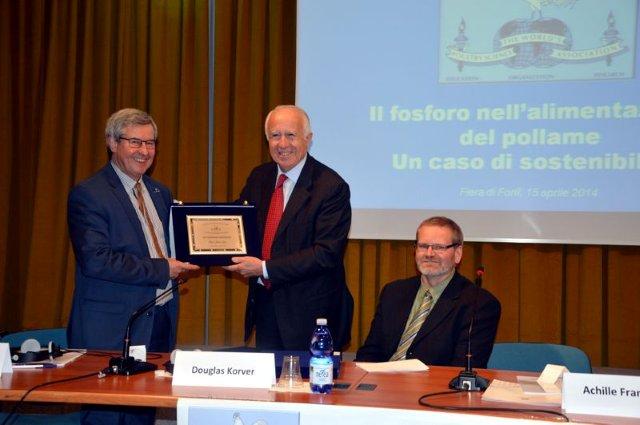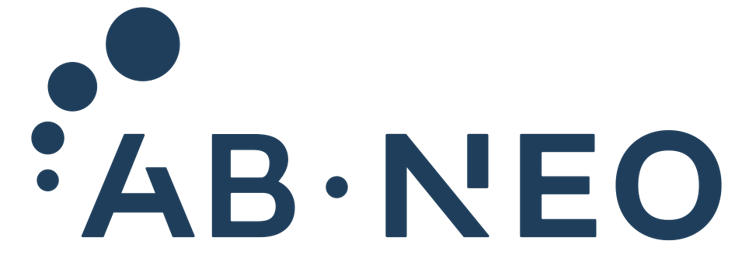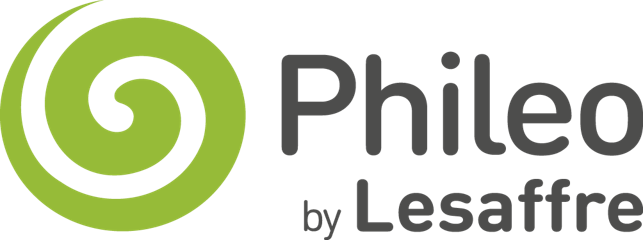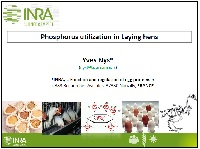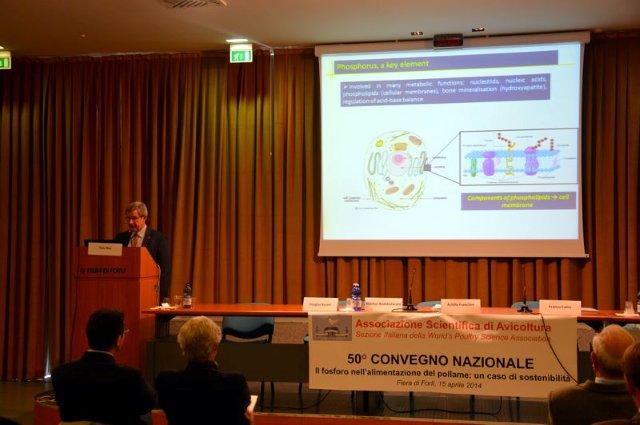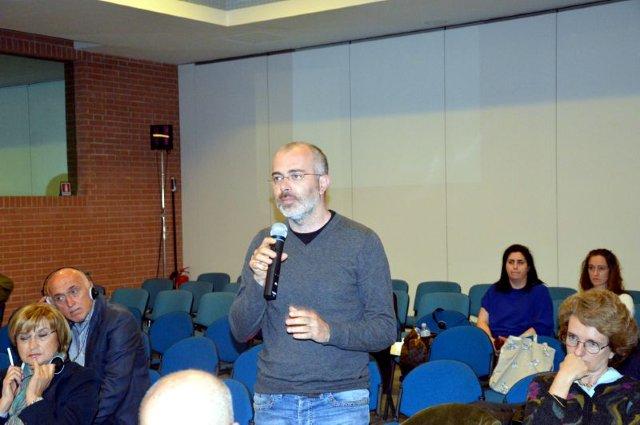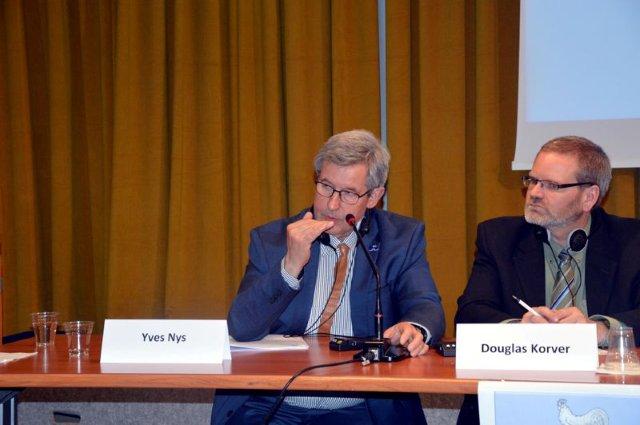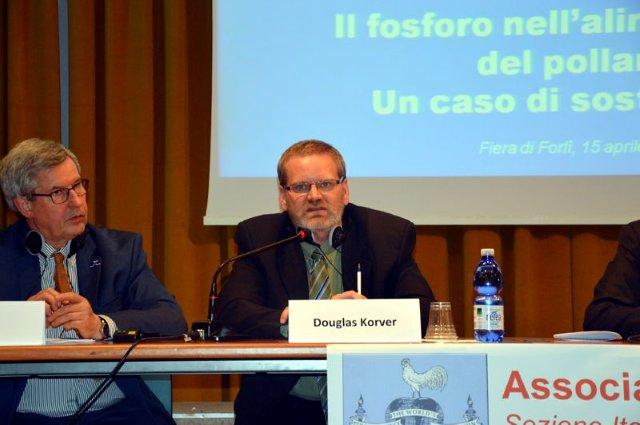Phosphorus utilization in laying hens
Y. NYS*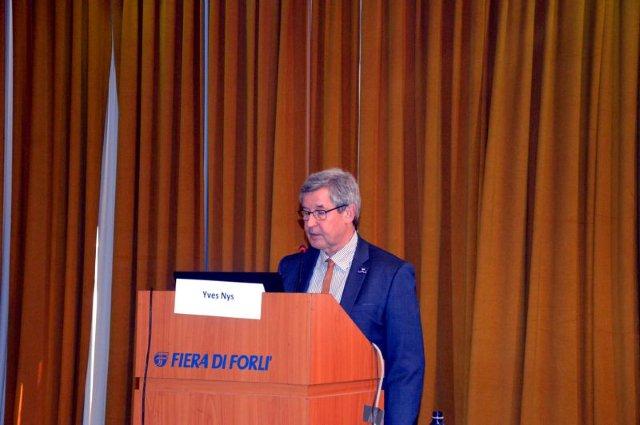
INRA, UR83 Recherches Avicoles, F-37380 Nouzilly, France
Phosphorus is an essential nutrient for numerous metabolic functions in laying hens from the cell level to the whole organism. Phosphorus is a constituent of nucleotides (ADN, ARN), ensures transfer of energy (ATP, ADP, GTP), is part of phospholipids which form the cell membranes and participates to numerous regulations of cell pathways through phosphorylation of proteins. At the level of the organism, phosphorus contributes to the acid-base and water balance and buffers cells and external fluids. It also contributes to regulation of feed intake in case of low and marginal supply of phosphorus but the magnitude is lower in hen compared to broilers. Indeed, P deficiency is known to induce many metabolic disorders resulting in deterioration of bone status, appetite and reproductive functions.
The main current recommendations in layer phosphorus nutrition for both immature pullets and layer hens are reported below.
Immature pullets. It is well established that the management of the pullets (nutrition, lighting program), the control of its body weight at sexual maturity is a key issue for optimizing hen performance. The supply of phosphorus should be high enough (>0.4% NPP) during the starting and growing period to ensure bone growth which occurs mainly during the first 8 to 10 weeks of age. A low phosphorus level during the first 10 weeks increases mortality of mature hens and increases incidence of osteoporosis. There is no evidence that during the following period until sexual maturity that increasing dietary phosphorus improves future hen performance or bone mineralization therefore dietary phosphorus can be lowered to 0.25% NPP. Positive effect on egg quality and hen bone has been demonstrated when providing a prelaying diet with 2-2.5% calcium two weeks before the production of first eggs. In the early literature, the scarce studies showed that the development of medullary bone and early integrity of cortical bone was poorly influenced by dietary phosphorus of the prelaying diet (Sauveur, 1987). Rao et al. (1995) however demonstrated increased bone breaking strength and density when increasing the total phosphorus from 0.4 to 0.55% TP (0.18 to 0.32% NPP). In addition, there is an increased retention of Ca and phosphorus by the pullets during the 2-3 weeks period before laying as the result of the kidney physiological stimulation of the active metabolite of vitamin D3. It seems therefore more safe to slightly increase the dietary phosphorus (0.3% NPP) when considering the physiological demand for the medullary bone formation to limit the resorption of cortical bone.
Laying hen. It is noteworthy that the majority of studies on P requirement and phytase were carried out using ground limestone as calcium source and therefore corresponded to a daily lost of loss of P in urine. Since 1980, the recommendation has been to reduce the phosphorus concentration of layer diets (0.3% aP) and to progressively increase the dietary calcium content. However, numerous experiments demonstrated that suboptimal concentrations of dietary phosphorus (<0.25% NPP, non phytic phosphorus) induces lower egg production and high mortality (Hartel, 1990; Sohail and Roland, 2002). A corn soybean diet without any supplementation of inorganic phosphorus, 0.32% TP or slightly supplemented with an inorganic P reaching 0.42% TP, elicited until 40% (90% in one study!) or more than 15% hen mortality respectively when low (2%) or high dietary Ca (>3.5%) are provided. The negative effect of low phosphorus (≤0.2% NPP) is also observed at a lower magnitude in negative control of recent studies exploring phosphorus phase feeding or phytase supplementation in hens fed 3.5 to 4% Ca (Keshavars, 2003; Lei et al., 2011). Feed intake, feed conversion index and egg weight are negatively affected at such low values but these parameter are clearly less sensitive to dietary P than egg production or mortality. Excess of dietary phosphorus (>0.4% NPP) also negatively affected egg weight, shell quality but can stimulate hen body weight (Sohail and Roland, 2002). The majorities of authors established the P requirement for hen at a level of 0.25 to 0.35% of NPP. The NPP is calculated as the sum of non phytic phosphorus of the diet (TP–PP) and inorganic P so to a level slightly higher than the available phosphorus used in the numerous studies anterior to 1990. Numerous studies and the current recommendations of breeding companies propose to progressively decreased P level with age of hens considering that the risk of osteoporosis due to shortage of dietary P decreased. The daily rate of shell formation and concomitant bone mobilization remain high in aged hens especially when the current tendency is to extend the laying period. Some experimental evidence in aged hens (65-90 wks) shows that dietary phosphorus should be rather increased to reduce mortality when dietary Ca is increased (4 to 5%) for improving shell quality (Bar et al., 2002).
In practical layer diet, phytase is nowadays used routinely and numerous studies have demonstrated the beneficial effect of microbial phytase on P retention allowing a decrease in inorganic phosphorus supplementation and a lower phosphorus excretion. The majority of plant phosphorus is present as phytic phosphorus and is not hydrolyzed in bird intestine. Supplementation of microbial phytase in hen diet efficiently hydrolyzes phytic phosphorus as demonstrated by numerous publications in this area. A recent meta-analysis (Ahmadi and Rodehuscord, 2012) explores the dose response of phytase in diet containing 0.1 to 0.4% NPP and shows that egg production and feed conversion ratio are optimized for 0.18 and 0.15% NPP when hen are supplemented with 150 or 300 FTU respectively. The majority of poultry diet contains 2.2 to 2.5 g/kg phytic phosphorus and it is considered that more than 70% of PP might be hydrolyzed by recent batch of commercially available phytase. Plant phytase were initially explored and hydrolyzes phytic phosphorus but their lower efficiency (more than 40%) compared to microbial and high variability in activity due to plant genetic origin or dietary technological treatments have limited their use. It might be however of interest to take into account their contribution in alternative feeding system using whole cereals with high phytase activity (wheat, triticale or rye). It is noteworthy that the calcium nutrition and its form influence bone mobilization during the laying cycle and that all nutritional management favoring synchronization between dietary Ca and shell formation spare bone
phosphorus resorption and urine excretion but the sparing effect of Ca particle on dietary phosphorus has not been experimentally quantified. The majority of papers on phosphorus nutrition used ground calcium and the few using coarse particle confirmed previous observation (Wu et al., 2006; Rao et al., 1999). However, it has been demonstrated that the main nutritional factors alleviating bone osteoporosis in laying hen if the use of particle Ca (Fleming et al., 2006). It is recommended to introduce two third of Ca particle in brown egg laying very early in the morning and 50% in white leghorn laying later. The extension of the laying period to 90 weeks of age might increase these risks of osteoporosis and might be prevented bylimiting the magnitude of decreased dietary P supply with age in hens. In conclusion, the introduction of particle size calcium and supplementation with phytase to a diet containing at least 0.2% NPP seem a reasonable compromise to avoid mortality and bone osteoporosis of hens for a laying period which is continuously increasing.
Download the Presentation in PDF Format.
References
AHMADI, H. and RODEHUTSCORD, M. (2012) A meta-analysis of responses to dietary nonphytate phosphorus and phytase in laying hens. Poultry Science 91: 2072-2078.
BAR, A., RAZAPHKOVSKY, V. and VAX, E. (2002) Re-evaluation of calcium and phosphorus requirements in aged laying hens. British Poultry Science 43: 261-269.
FLEMING, R.H., MCCORMACK, H.A., MCTEIR, L. and WHITEHEAD, C.C. (2006) Relationships between genetic, environmental and nutritional factors influencing osteoporosis in laying hens. British Poultry Science 47: 742-755.
HÄRTEL, H. (1990) Evaluation of the dietary interaction of calcium and phosphorus in the high producing laying hen. British Poultry Science 31: 473-494.
KESHAVARZ, K. (2003) The effect of different levels of nonphytate phosphorus with and without phytase on the performance of four strains of laying hens. Poultry Science 82: 71-91.
LEI, Q.B., SHI, L.X., ZHANG, K.Y., DING, X.M., BAI, S.P. and LIU, Y.G. (2011) Effect of reduced energy, protein and entire substitution of inorganic phosphorus by phytase on performance and bone mineralisation of laying hens. British Poultry Science 52: 202-213.
RAO, S.K., ROLAND, D.A., ORBAN, J.I., RABON, H.W. and BRYANT, M.M. (1995) Age at sexual maturity influences the response of single comb white leghorn publlets to marginal and low levels of dietary phosphorus. Journal of Nutrition 125: 1342-1350.
RAO, S.V.R., REDDY, V.R., and REDDY, V.R. (1999) Non-phytin phosphorus requirements of commercial broilers and White Leghorn layers. Animal Feed Science and Technology 80: 1-10.
SOHAIL, S.S., and ROLAND, D.A. (2002) Influence of dietary phosphorus on performance of Hy-Line W36 hens. Poultry Science 81: 75-83.
WPSA (1985) Mineral requirements for poultry—mineral requirements and recommendations for growing birds. World's Poultry Science Journal 41: 252-258.
WU, G., LIU, Z., BRYANT, M.M., and ROLAND, D.A. (2006) Comparison of natuphos and phyzyme as phytase sources for commercial layers fed corn-soy diet. Poultry Science 85: 64-69.
